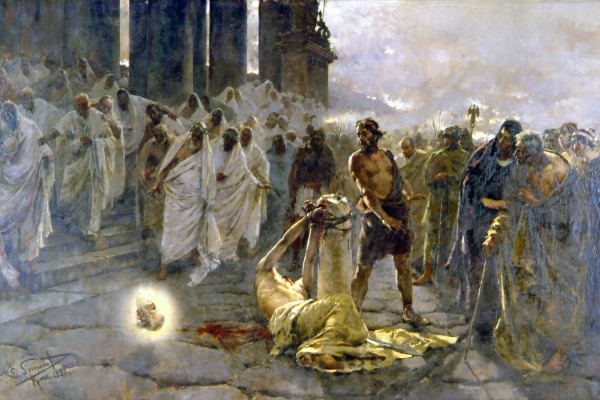Click to join the conversation with over 500,000 Pentecostal believers and scholars
Click to get our FREE MOBILE APP and stay connected
| PentecostalTheology.com



In an article, The Vine & Wine at JewishExpert.com, there is an observation about recently discovered Ugaritic wine rituals found in a library at the home of the high priest. According to the article, it is “the fullest Ugaritic ritual found to date.” The article states:
The importance of the rite is evident from the number of deities
(nearly thirty) and sacrifices (about 180) that it involves.The festival takes place in the month of Rišyn…meaning “first” or
“best” wine [riš yn]), “roughly the last lunar month before the fall
equinox… The beginning of the text dictates that a representative
cluster of grapes be cut from its vine to serve as, or alongside, a
peace offering for El. Subsequently the king is ritually purified,
proclaims the festival from his throne, then goes to the temple where
he sets up booths for various deities on the roof.As we can see, there are several themes here that sound very biblical,
including the fall festival like the Feast of Tabernacles, which
features both the tabernacles/booths and vintage. It is also evident
that wine and the grape harvest were highly important to the
Ugaritians, whose high god El was the same as that of the Israelites.
Indeed, the peace offering of the grape cluster to El reminds one
again of the spies carrying Canaan’s grapes to Moses.
Is this a reasonable parallel? Do we know approximately what time of the year the spies returned, as recorded in Numbers 13, from their exploration of the promised land?
Archeologists have found a scene from the tomb of an Egyptian woman dating from 1470 B.C.E. which depicts a group of men working at a wine press. The caption of the scene reads; "Straining out wine by the Apiru.”
Biblical archeologists have made a strong connection between the Apiru and the Hebrews.
One author suggests:
We may infer from this that the Hebrews of that time were the
specialized wine-makers and vintners of Egypt. The inference is
strengthened by a further scene illustrating the pouring of wine into
jars, with the caption: "Wine from the vineyard of the Roads of
Horns."
So, a strong inference can be made that when the spies returned, the grapes that they brought back were likely wine grapes. This would fit into the concept of a reformed Ugaritic ritual as being the occasion for a new way of looking at "El" in light of the vanilla monotheism that Moses proclaimed.




Most Talked About Today